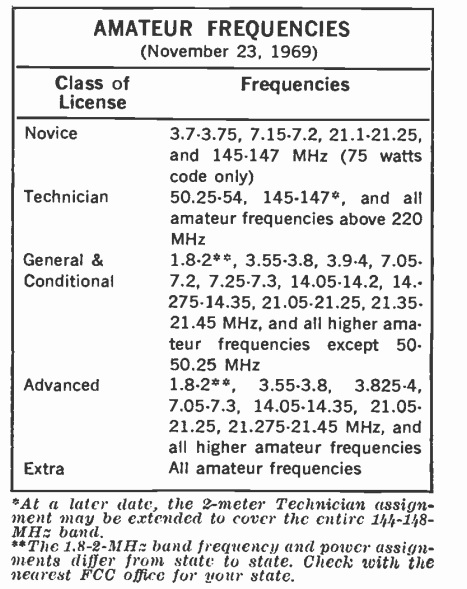 Since the early 1950’s, most U.S. amateur radio operators shared the same privileges. With the exception of novice and technician licensees, all hams (general, advanced, and extra class) could operate on the same frequencies.
Since the early 1950’s, most U.S. amateur radio operators shared the same privileges. With the exception of novice and technician licensees, all hams (general, advanced, and extra class) could operate on the same frequencies.
The Soviet Sputnik served as a wake-up call for U.S. science, and one result was that there was a call for better training of hams. It was reasoned that they should learn how to pass the tougher tests, and that they needed an incentive to do so.
Thus, “incentive licensing” was born. Even though it’s been over a half century and most of the supposed bad guys (as well as most of the “victims”) are dead, there’s still resentment in some quarters. This is because many hams lost privileges with incentive licensing, and they had to pass more tests to get those privileges back.
The first phase of incentive licensing took place in November 1968. The new rules had been announced some time in advance, and many hams had used the time to upgrade to advanced or extra. For those who hadn’t, some privileges were taken away in 1968. And 50 years ago today, November 23, 1969, the second phase took effect. As of that date, the privileges were as shown in the chart above, which was taken from the November, 1969, issue of Popular Electronics.
Similar privileges were in effect when I got my license a few years later, although there had been some changes. First of all, the exclusive extra CW segment when I got licensed was the bottom 25 kHz of 80, 40, 20, and 15, as opposed to the 50 kHz shown here. Also, the novice privileges had changed slightly. When I got my license, novices no longer had 2 meter privileges. (A few years before, novices had been allowed ‘phone on 2 meters, but by 1969, it was CW only.) The 15 meter novice band got a little smaller, as the top 50 kHz were shaved off. By 1974, novices were also allowed on 28,1 to 28.2 MHz CW. Finally, the 40 meter novice band was shifted down to 7.1 – 7.15 MHz by the time I was licensed.
